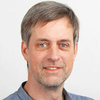Department Water Resources and Drinking Water
Environmental Isotopes
From groundwater dating to climate effects on lakes
The main activities of the Environmental Isotopes Group are high sensitive transient (biogeochemically conservative) tracer analytics (noble gas mass spectrometry, GC-MS, GC-ECD), the application of environmental tracer methods in groundwater and lakes (tritium, noble gases, SF6, CFCs, radon) and numerical methods of data analysis and modelling of aquatic systems.
Examples from our current research:
- Determining the natural dynamics of water bodies (groundwater dating, water exchange in lakes and oceans.)
- Using noble gases to study gas/water-exchange processes at methane bubbles in the sediments and the water column of lakes and oceans.
- Gas exchange in the unsaturated zone and at the groundwater table, especially, excess air formation.
- Assesment of pollutant transport and degradation in contaminated aquifers.
- Time series analyses in groundwater and surface water.
Our Noble Gas Laboratory is located at the Swiss Federal Institute of Technology Zürich (ETHZ) and operated in collaboration with the Institute of Isotope Geochemistry and Mineral Resources (IGMR).
The Transient Tracers Laboratory (SF6, CFCs and noble gases) of our group is located at Eawag in Dübendorf.
More details can be found in the methods and projects sections. We also offer tracer analyses on a commercial basis. Refer to our guidelines for external projects, price list and the manual for water sampling for further information.
Research Projects of the Environmental Isotopes Group
Noble gases (He, Ne, Ar, Kr, Xe, Rn), tritium (3H), chloroflurocarbons (CFCs), and sulfur hexafluoride (SF6) are widely used as conservative environmental tracers in lakes, oceans and groundwater. Use of these tracers allows us to study past environmental conditons, the dynamics of surface and subsurface water bodies, and the processes affecting the transport and biogeochemistry of solutes in aquatic environments. Some examples of the fields of application of our tracer methods are:
- Studying mixing processes in lakes, especially deep-water renewal
- Systems analysis by inverse modelling of tracer data
- Investigation of gas-exchange and bubble-mediated transport in the water column
- Influence of climate change on lakes and groundwaters
- Quantification of gas fluxes from the Earth mantle and crust into water bodies
- Dating of groundwater on time scales from minutes (220Rn), days (222Rn), years and decades (3H/3He, CFCs, SF6) to millennia and millions of years (radiogenic 4He)
- Reconstruction of temperature and other environmental conditions prevailing during recharge of (paleo) groundwaters
- Quantification of natural and artificial groundwater recharge, especially in arid regions
- Interactions of groundwater and surface water (rivers, lakes and oceans)
- Transport and biogeochemical transformations in groundwater
- Gas exchange in the unsaturated zone and at the groundwater table (excess air formation)
- Studying groundwater circulation and pollutant transport, e.g. in organic-contaminated aquifers
- Monitoring and analysis of environmental and anthropogenic radionuclides in the aquatic environment
- Reconstruction of environmental conditions using «new» noble gas archives (sediment porewaters, stalagmite fluid inclusions)
- Development of high-resolution (noble) gas time series for quantitative studies of biogeochemical turnover in aquatic systems
Further reading
- Kipfer et al. (2002), Noble gases in lakes and ground waters, Noble gases in geochemistry and cosmochemistry, Mineralogical Society of America, Geochemical Society
- Brennwald et al. (2013), Noble Gases as Environmental Tracers in Sediment Porewaters and Stalagmite Fluid Inclusions, The Noble Gases as Geochemical Tracers, Advances in Isotope Geochemistry, Springer
- Our methods and techniques
Staff
Former Group Members
These People worked in the Environmental Isotopes Group:
- Werner Aeschbach-Hertig
- Helena Amaral
- Urs Beyerle
- Eduard Hoehn
- Markus Hofer
- Johannes Holocher
- Christian Holzner
- Thomas Jankowski
- Stephan Klump
- Frank Peeters
- Yvonne Scheidegger
- Stephan Huxol
- Lars Mächler
- Olga Kwiecien
- Ryan North
- Nadia Vogel
- Simon Figura
- David Livingstone
- Yama Tomonaga
- Alex Lightfoot






